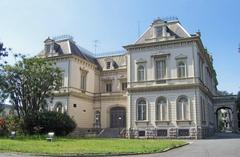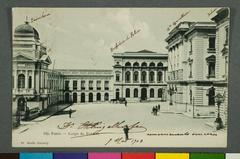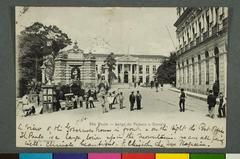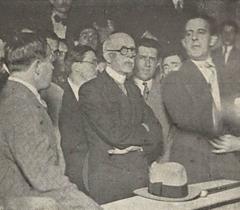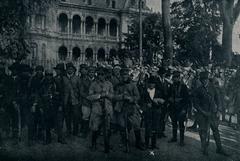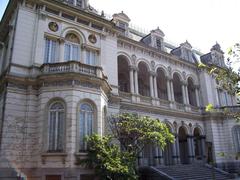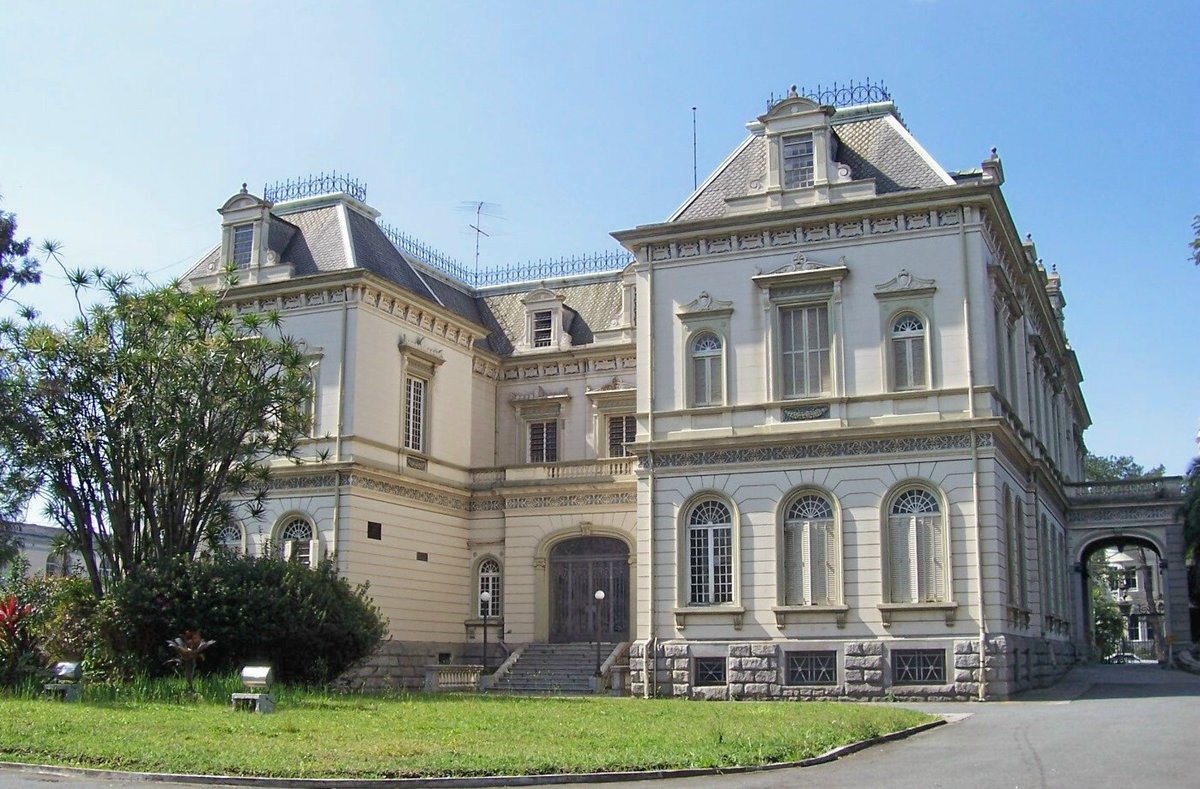
Palace of the Champs Elysees: Visiting Hours, Tickets, and Guide to São Paulo Historical Sites
Date: 14/06/2025
Introduction
The Palace of the Champs Elysees (Palácio dos Campos Elíseos) stands as a prominent landmark in São Paulo, Brazil, representing the city’s blend of European-inspired sophistication and local innovation. Constructed in the early 20th century and influenced by the Avenue des Champs-Élysées in Paris, the palace is a testament to São Paulo’s cosmopolitan ambitions, architectural diversity, and historical depth. Over the years, it has transitioned from a seat of government to a vibrant center for culture and education, welcoming visitors with exhibitions, events, and guided tours that highlight the city’s multifaceted heritage. This detailed guide offers up-to-date information on visiting hours, tickets, accessibility, restoration efforts, and nearby attractions to help you make the most of your visit to one of São Paulo’s most iconic historical sites. For the latest updates, consult official resources and cultural listings. (Palace of the Champs Elysees São Paulo: Visiting Hours, Tickets & Historical Insights), (Campos Elíseos Palace Wikipedia page), (Touropia - Tourist Attractions in São Paulo)
Contents
- Introduction and Historical Significance
- Origins and Architectural Features
- Visiting Hours and Ticket Information
- Accessibility and Visitor Amenities
- Getting There and Best Visiting Times
- Special Events, Guided Tours, and Photographic Spots
- Restoration Efforts and Conservation
- Current Uses and Community Engagement
- FAQs
- Nearby Attractions and Travel Tips
- Conclusion and Practical Tips
- References and Further Reading
Historical Background and Cultural Significance
Origins and Naming
Named after Paris’s celebrated Avenue des Champs-Élysées, the Palace of the Champs Elysees reflects São Paulo’s pursuit of international prestige and modernity. Constructed during a period of rapid urban growth, the palace became a symbol of elegance and advancement for the city, and its name underscores São Paulo’s aspiration to join the ranks of the world’s great capitals.
Architectural Features
The palace skillfully merges European neoclassical elements—such as ornate facades, pilasters, and wrought-iron balconies—with touches of Brazilian modernism found in its construction materials and interior layout. The result is a harmonious structure with grand interiors, large windows, and decorative flourishes, making it a highlight for architecture enthusiasts and photographers alike.
Visiting the Palace of the Champs Elysees
Visiting Hours and Tickets
- Opening Hours: Generally open Tuesday to Sunday, 10:00 AM to 5:00 PM. Check the official website or local listings for any changes due to special events or holidays.
- Admission: Entry to most exhibitions and the public areas is free or affordably priced; special events may require a ticket. Guided tours may have a nominal fee and often require advance booking.
- Guided Tours: Tours are offered in Portuguese and, occasionally, in English and Spanish. Reserve your spot online or at the visitor center.
Accessibility and Visitor Amenities
The palace is fully accessible, featuring ramps, elevators, and accessible restrooms. Assistance for visitors with mobility challenges is available at the entrance. Cloakrooms and seating areas are provided, though there is no on-site café—however, numerous dining options can be found nearby.
How to Get There and Best Times to Visit
- Location: Centrally located on Avenida Rio Branco, the palace is within walking distance of major cultural and historical sites.
- Public Transport: Accessible by metro (Estação Júlio Prestes and Estação Luz), various bus routes, and taxi.
- Parking: Public parking lots are available in the surrounding area.
- Best Times to Visit: Weekday mornings or early afternoons are ideal for avoiding crowds. São Paulo’s spring (September–November) offers pleasant weather for exploring the area.
Special Events, Guided Tours, and Photographic Spots
- Events: The palace regularly hosts art exhibitions, cultural festivals, and historical reenactments. Consult the official website for the latest schedule.
- Guided Tours: These provide deeper insights into the palace’s history, architecture, and restoration projects.
- Photographic Spots: Capture the building’s grand façade, intricate interiors, and panoramic city views from upper floors. Early morning or late afternoon light is best for photography.
Restoration Efforts and Conservation
Historical Restoration Timeline
Following a devastating fire in 1967, which prompted the relocation of São Paulo’s state government, the palace’s focus shifted toward heritage preservation. It was officially listed as a heritage site by CONDEPHAAT in 1977, with further legal protection in 1979.
21st Century Restoration Projects
Major restoration initiatives in the 2000s included a comprehensive façade reconstruction and extensive interior renovations, culminating in a large-scale project between 2013 and 2017. These works restored decorative elements, improved structural safety, and modernized the facility for accessibility and public use.
Accessibility and Safety Upgrades
Recent restorations have introduced ramps, elevators, accessible restrooms, and modern fire safety systems, ensuring the palace is inclusive and secure for all visitors.
Current Uses and Community Engagement
- Cultural and Educational Center: The palace offers exhibitions, workshops, and public programs in collaboration with local museums and universities, fostering cultural appreciation and learning.
- Administrative Functions: While no longer the seat of government, the palace occasionally hosts official ceremonies and civic events.
- Community Outreach: Regularly open to the public for tours, educational activities, and community events supporting local artists and cultural initiatives.
FAQs
Q: What are the Palace’s opening hours?
A: Typically Tuesday to Sunday, 10:00 AM to 5:00 PM. Always check ahead for updates.
Q: Is admission free?
A: Most exhibitions are free; some special events and guided tours may have a small fee.
Q: Is the palace accessible for visitors with disabilities?
A: Yes, with ramps, elevators, and accessible restrooms.
Q: Are guided tours available in English?
A: Some tours are available in English and Spanish; inquire in advance.
Q: Can I take photographs inside?
A: Photography is generally allowed except during certain exhibitions. Flash and tripods may be restricted.
Nearby Attractions and Travel Tips
When visiting the Palace, consider exploring these nearby sites:
- Sala São Paulo: Renowned for world-class concerts in a neoclassical setting.
- Pinacoteca do Estado: São Paulo’s oldest art museum, featuring Brazilian works.
- Avenida Paulista: A vibrant avenue lined with cultural institutions, shops, and cafes.
- Teatro Porto Seguro, Copan Building, Anhembi Sambodromo: Additional landmarks all easily accessible by public transport.
Travel Tip: Use public transport or taxis for convenience; early morning visits are less crowded and better for photography.
Conclusion
The Palace of the Champs Elysees encapsulates São Paulo’s rich history, evolving architecture, and vibrant culture. Through its carefully maintained neoclassical and modernist features, extensive restoration efforts, and diverse programming, the palace serves as a living monument to the city’s past and present. Whether you’re an architecture lover, history enthusiast, or first-time visitor, the palace offers an accessible and memorable experience at the heart of São Paulo’s cultural scene. For the latest opening hours, ticketing details, and event information, consult official sources and plan ahead for a rewarding visit.
Plan Your Visit and Stay Connected
References and Further Reading
- Booking.com - Palace of the Champs Elysees São Paulo
- Touropia - Tourist Attractions in São Paulo
- Campos Elíseos Palace Wikipedia page
- TravelWeek São Paulo
- Artistic-Cultural Collection of the Governmental Palaces of the State of São Paulo - Wikipedia
- Brazil City Guides
- Parisitour.fr - Champs Elysees in Paris
- WanderOn - Champs Elysees
- World of History Cheat Sheet
